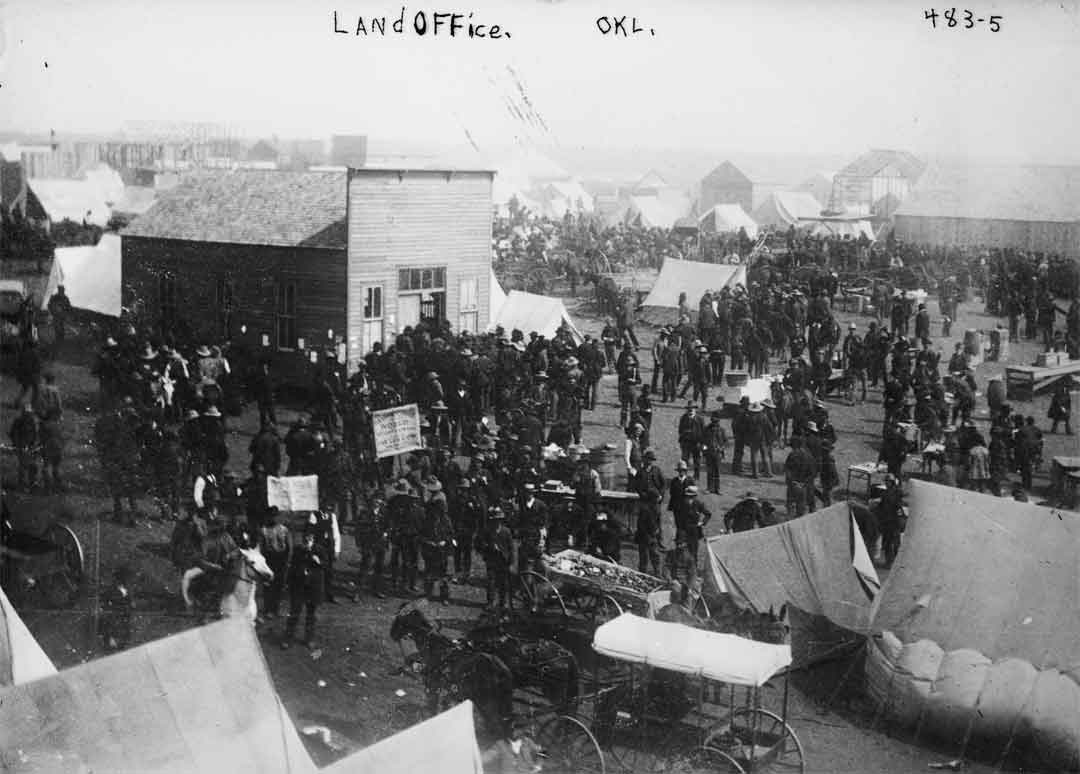Oklahoma Land Rush 1889

Land Office in Oklahoma City
The last major unsettled territory in the United States (which had been exclusively Indian) was opened for settlement. Over 200,000 settlers waited at the borders of the territory awaiting settlement. On the first day the territory was opened, 12,000 settlers arrived in Guthrie, Oklahoma.
The Land Rush of 1889 originated from an amendment to the Indian Appropriation Bill, authorizing President Harrison to proclaim two million acres of Indian lands available for settlement in Oklahoma territory, previously only open to Native Americans. Once the land was opened, it fell under the provisions of the Homestead Act of 1862, under which a settler could claim 160 acres of public land if they lived on it for five years and improved it.
Soon after Harrison signed the law, groups formed to organize the settlement of the territory. Only part of Oklahoma was being opened for settlement, but it was considered some of the best unoccupied land in the country. As the day for the opening of the land approached, tens of thousands gathered at the various entry points. At the stroke of noon on April 22, the signal was given simultaneously at all the entry points. Fifty thousand people rushed forward on horseback. Others packed trains. They immediately set out and marked their plots of land. While the goal of opening the territory was to settle agricultural lands, many people wanted to settle in the new cities that mushroomed in days and even hours. By the end of the first day, Oklahoma City and Guthrie each had 10,000 residents, and by the second day, schools were being held.
